
The three most popular consumer social networks, Facebook [FB], Twitter [TWTR], and Instagram, have grown from scrappy upstarts to some of the most powerful communication platforms on earth. Despite the similarities of these platforms, users, celebrities, and companies are embracing them in different ways. To understand how they are evolving and performing, ARK researched engagement on the platforms across six user categories: consumer products, services, enterprises, news, celebrities, and governmental organizations. The results revealed some interesting insights, especially for Twitter and Instagram.
Consumer Brands
Consumer focused companies have gained unparalleled exposure to large audiences on Facebook. As shown below, the prominent brands in our survey average 31 million Facebook followers, compared to 2.3 million on Twitter and 1.4 million on Instagram. The difference in the sizes of these platforms partly explains the difference in the number of followers for the brands: Facebook has roughly five times the number of monthly users (1.4 billion) as Twitter (302 million) and Instagram (300 million). Even after adjusting for size, however, four times as many people follow consumer companies on Facebook than on Twitter or Instagram. That said, Instagram is growing more rapidly than Twitter, and Nike [NKE], BMW [BMW], and Red Bull all have more followers on Instagram than Twitter.

Source: Facebook, Twitter, Instagram (Q2 2015)
Service Companies
Facebook is also the dominant platform for service companies, but the scale of service companies’ presence on social networks across the platforms is significantly smaller than that of consumer brands. While prominent companies that sell goods reach tens of millions of fans on Facebook, companies that sell services reach an average of 20% that figure, as shown below. Additionally, Instagram has very little penetration for service companies, most likely because services do not translate as easily into photos.
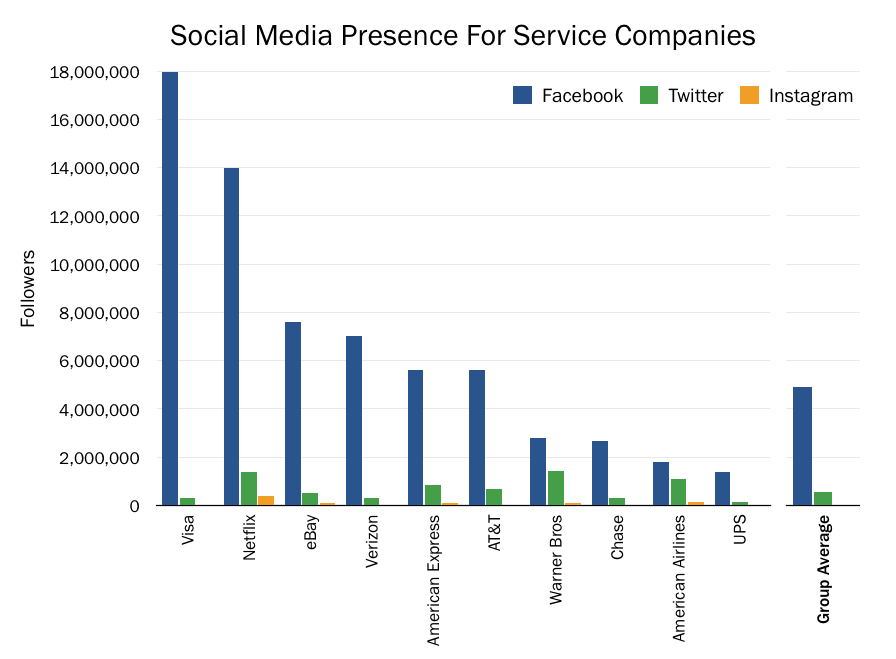
Source: Facebook, Twitter, Instagram (Q2 2015)
Enterprise
Social networks have much less penetration in the enterprise space. As shown below, despite their enormous market capitalizations, companies such as IBM [IBM], Merck [MRK], and AIG [AIG] reach only a few hundred thousand people on average on social media platforms. In fact, the total reach of the ten enterprise companies shown below is roughly the same as the number of Starbucks [SBUX] followers on Twitter alone. The primary reason is that enterprise companies serve other companies, as opposed to individuals. Interestingly, Twitter is punching above its weight in the enterprise category and, along with LinkedIn [LNKD], it is the top platform used by sales and marketing people.
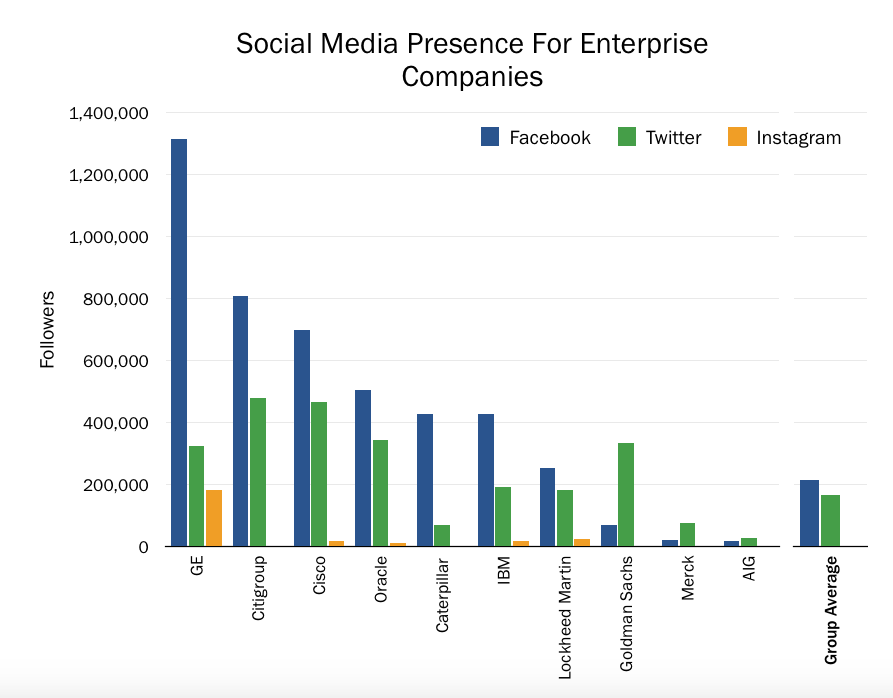
Source: Facebook, Twitter, Instagram (Q2 2015)
News
Facebook and Twitter both play important roles in the propagation of news, reaching an average of eight and seven million news-oriented followers, respectively, as shown below. Twitter is especially well positioned for real time news. At BBC and CNN [TWX], Twitter accounts are called “BBC Breaking News” and “CNN Breaking News”, respectively, while their Facebook counterpart uses standard branding.
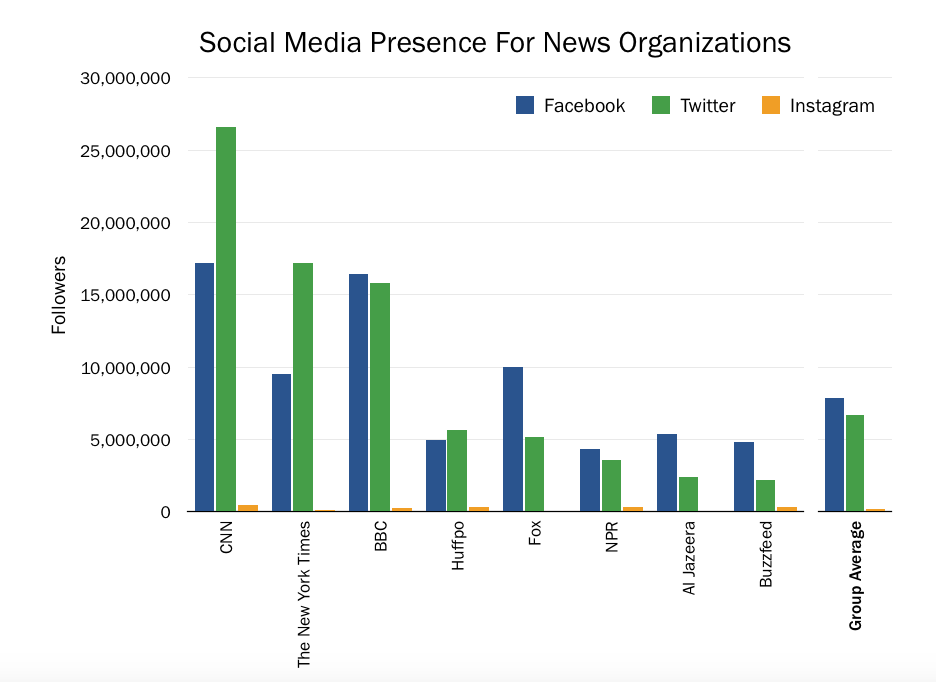
Source: Facebook, Twitter, Instagram
While Twitter dominates breaking news stories, Facebook is superior in news sharing. Shareholic found that 24.6% of web referral traffic comes from Facebook compared to 0.8% from Twitter. Buzzfeed’s viral story about the infamous color-debated dress generated 8.6 million viewers on Facebook, but fewer than one million on Twitter.
Celebrities
Social networks maximize their potential in the hands of powerful celebrities, often reaching tens of millions of people across multiple networks. As shown below, Facebook reaches the largest number of people but on average (using the geometric mean), Twitter is slightly ahead. Instagram, despite being a relative newcomer, has strong momentum, especially with young artists. Twenty one year old Ariana Grande has more followers on Instagram than on Twitter or Facebook.
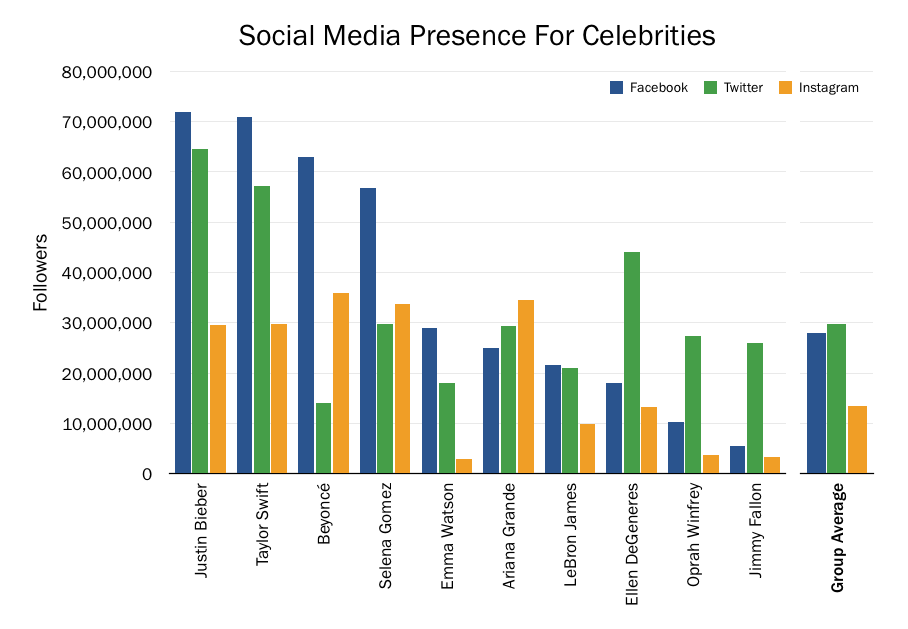
Source: Facebook, Twitter, Instagram (Q2 2015)
Celebrities appear to treat Twitter and Instagram as personal accounts and Facebook as a marketing platform. They often push random thoughts, selfies, and informal videos to Twitter and Instagram. Their Facebook feeds appear more curated and promotional, with public relations and marketing more in control. Fans have taken note and are gravitating toward the more authentic sources, with engagement particularly high on Instagram.
Governmental and Humanitarian Organizations
Twitter dominates other social networks in the dispersion of real-time information from governmental and humanitarian organizations. People turn first to Twitter for the latest White House announcement, Center for Disease Control (CDC) warning, and Red Cross disaster relief efforts. Facebook plays a less important role, while Instagram’s flattering filters aren’t as relevant in communicating fast-breaking serious situations.
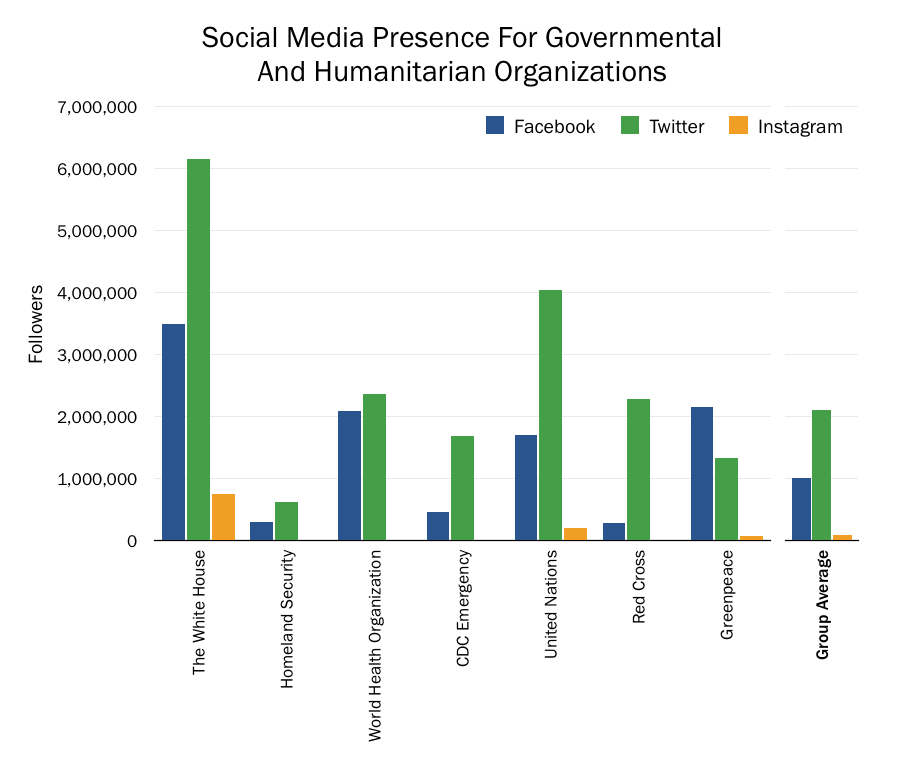
Source: Facebook, Twitter, Instagram
Conclusion
Facebook, Twitter, and Instagram play distinct roles in connecting people with companies, celebrities, and news. Facebook, by virtue of its billion-user reach, plays the biggest role. Twitter, though only a fifth of Facebook’s size, is the go-to source for breaking news and the preferred way to connect with celebrities. Most interesting is the rise of Instagram. Just five years old, it has strong presence among major brands and is the preferred platform for young celebrities. With Facebook playing an increasing role in general news dissemination and celebrities flocking to Instagram, Twitter’s stronghold remains real-time events. If Twitter is to succeed as a platform, it must succeed here.
- Companies were selected from the Fortune 500 and Fortune’s Most Valuable Brands list. News organizations, celebrities, and governmental organizations were selected for global representation and popularity.
- Due to the large dynamic range of the sample data, all averages cited in this article are calculated using the geometric mean.





